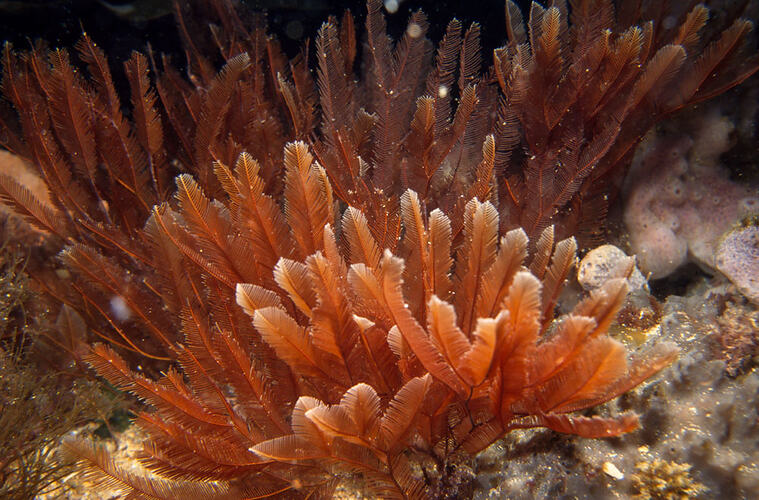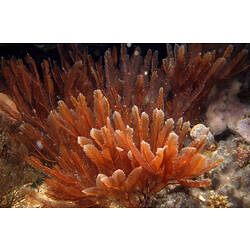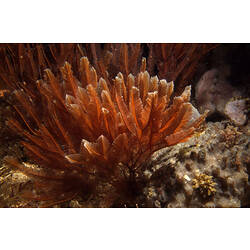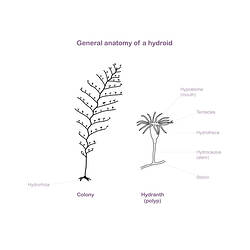General Description
Colony of individual polyps (hydranths) joined by root-like network of tubular stolons at the base. Colony shape is feather-like (pinnate). Colour: golden-amber, gonothecae flesh-coloured. Up to 10 cm high.
Biology
This is one of the most spectacular and graceful hydroids in southern Australia. Their colonies are present throughout year, becoming fertile in summer.
Distribution
Southern Australia (South Australia, Victoria, Western Australia).
Habitat
Subtidal, on rock faces exposed to surge.
More Information
-
Animal Type
-
Animal SubType
-
Brief Id
Sparsely branched amber coloured colonies.
-
Maximum Size
10 cm
-
Habitats
-
Diet
Plankton or Particles
-
Diet Categories
Plankton
-
Hazards
Generally not harmful but still able to sting bare skin.
-
Endemicity
-
Commercial
No
-
Conservation Statuses
DSE Advisory List: Not listed, EPBC Act 1999: Not listed, IUCN Red List: Not listed
-
Depths
Shallow (1-30 m), Deep ( > 30 m)
-
Water Column Locations
On or near seafloor
-
Taxon Name
-
Scientific Author
(Watson, 1973)
-
Common Name
Hydroid
-
Phylum
-
Class
-
Subclass
-
Order
-
Family
-
Genus
-
Species Name
aureum




